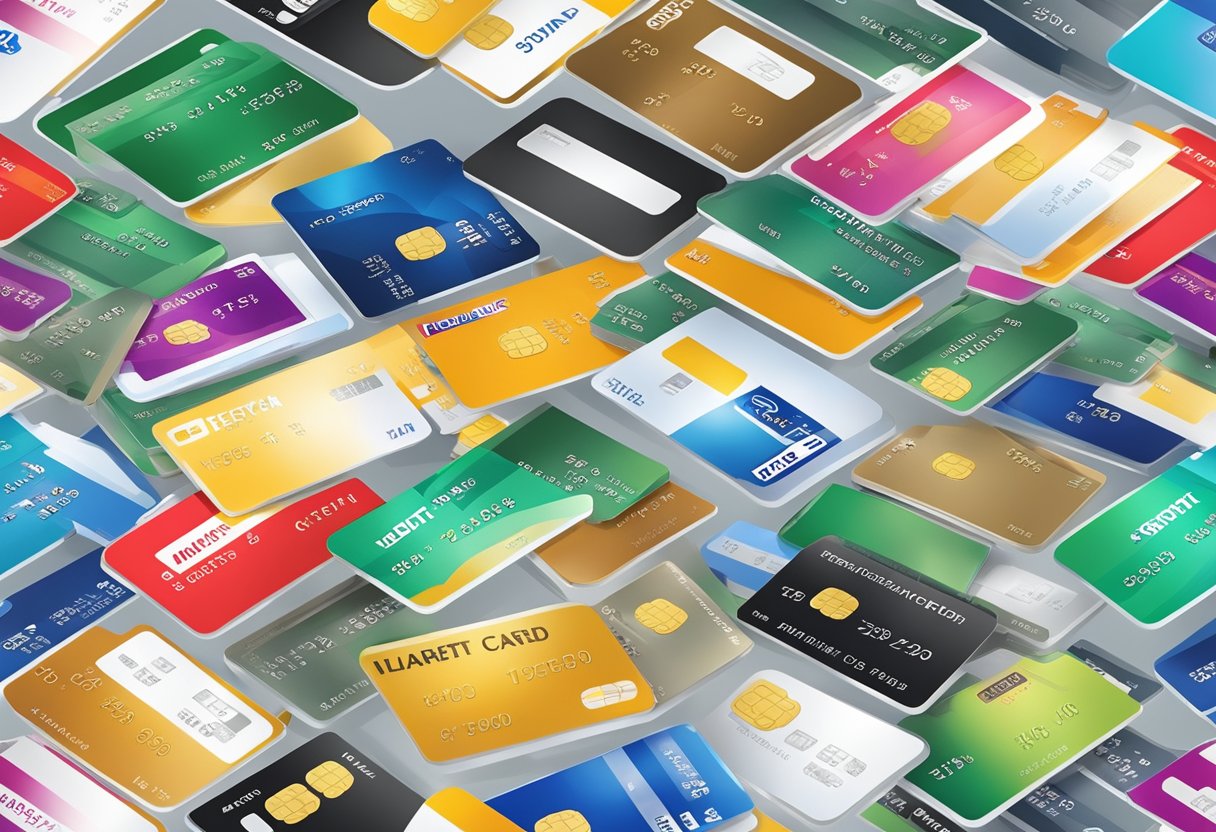Types Of Credit
Credit is an essential aspect of personal finance that enables individuals to borrow money when they need it. It is a contractual agreement between a lender and a borrower that allows the borrower to access funds and pay them back over time, usually with interest. Understanding the different types of credit and how they work is crucial in managing personal finances effectively.
There are various types of credit accounts, including installment loans, revolving credit, and open credit. Installment loans are those that require the borrower to repay a fixed amount of money over a specified period. Revolving credit, on the other hand, allows the borrower to access a line of credit up to a certain limit and make payments as they wish. Open credit is a type of credit that requires the borrower to make full payments each month.
Credit products and their features vary depending on the financial institution and the borrower’s creditworthiness. It is essential to manage credit responsibly by making payments on time and not borrowing more than is necessary. Advanced credit concepts like credit scores and credit reports can also help borrowers understand their creditworthiness and access credit products that suit their needs.
Key Takeaways
- Understanding the different types of credit and how they work is crucial in managing personal finances effectively.
- Credit products and their features vary depending on the financial institution and the borrower’s creditworthiness.
- Managing credit responsibly by making payments on time and not borrowing more than is necessary is essential.
Understanding Credit Fundamentals

Credit is an essential aspect of personal finance, and understanding its fundamentals is crucial. A credit score is a numerical representation of a person’s creditworthiness, and it is calculated based on the information in their credit report. A credit report is a record of a person’s credit history, including their borrowing and repayment activities.
Credit Score and Credit Report
A credit score is a three-digit number that ranges from 300 to 850, and it is an indicator of a person’s creditworthiness. A higher credit score means that a person is more likely to be approved for credit and receive favorable terms, such as lower interest rates. The most widely used credit scoring model is the FICO score, which is based on five factors: payment history, amounts owed, length of credit history, types of credit used, and new credit.
A credit report is a detailed record of a person’s credit history, including their borrowing and repayment activities. It contains information such as account balances, payment history, credit inquiries, and public records. Credit reports are maintained by credit bureaus, which are companies that collect and maintain credit information on individuals and businesses.
The Role of Credit Bureaus
Credit bureaus play a critical role in the credit industry by collecting and maintaining credit information on individuals and businesses. The three major credit bureaus in the United States are Experian, Equifax, and TransUnion. They collect information from various sources, such as lenders, credit card companies, and public records, and use it to create credit reports.
Credit bureaus also provide credit scores, which are based on the information in a person’s credit report. These scores are used by lenders and other creditors to evaluate a person’s creditworthiness and determine whether to approve their credit application.
Creditworthiness and Risk Assessment
Creditworthiness is a measure of a person’s ability to repay their debts. Lenders and other creditors use credit reports and credit scores to assess a person’s creditworthiness and evaluate the risk of lending to them. A person with a high credit score and a positive credit history is considered more creditworthy and less risky than someone with a low credit score and a negative credit history.
Credit risk is the likelihood that a borrower will default on their debt obligations. Lenders and other creditors use credit reports and credit scores to assess credit risk and determine whether to approve a credit application. A person with a high credit score and a positive credit history is considered less risky than someone with a low credit score and a negative credit history.
In conclusion, understanding credit fundamentals is crucial for making informed financial decisions. A person’s credit score and credit report play a significant role in their ability to obtain credit and receive favorable terms. Credit bureaus collect and maintain credit information on individuals and businesses, and lenders and other creditors use this information to assess creditworthiness and evaluate credit risk.
Types of Credit Accounts
When it comes to credit, there are different types of credit accounts that you should be aware of. These accounts can impact your credit score and determine your creditworthiness. In this section, we will discuss the three main types of credit accounts: revolving credit, installment credit, and open credit.
Revolving Credit
Revolving credit is a type of credit account that allows you to borrow money up to a certain credit limit. You can use the credit as needed and pay it back over time. Credit cards and home equity lines of credit (HELOCs) are examples of revolving credit accounts.
One of the benefits of revolving credit is that it provides flexibility. You can borrow money as needed and pay it back on your own schedule. However, it’s important to use revolving credit responsibly and not max out your credit limit. Doing so can negatively impact your credit score.
Installment Credit
Installment credit is a type of credit account that involves borrowing a fixed amount of money and paying it back over a set period of time. Student loans and auto loans are examples of installment credit accounts.
Unlike revolving credit, installment credit has a fixed payment schedule. This can make it easier to budget and plan for payments. However, missing payments or defaulting on an installment loan can have a significant negative impact on your credit score.
Open Credit
Open credit is a type of credit account that does not have a fixed credit limit or payment schedule. Instead, it allows you to borrow money as needed and pay it back on your own schedule. Examples of open credit accounts include charge cards and some business credit accounts.
One of the benefits of open credit is that it can provide flexibility for businesses or individuals who have irregular income or expenses. However, it’s important to use open credit responsibly and not borrow more than you can afford to pay back.
Understanding the different types of credit accounts can help you make informed decisions about your credit and improve your credit score over time.
Credit Products and Their Features
There are various types of credit products that are available to consumers and businesses. Each type of credit product has its own unique features that make it suitable for different financial needs. In this section, we will discuss three main types of credit products and their features.
Loans and Mortgages
Loans and mortgages are types of credit products that are used to finance large purchases or investments. Mortgages are typically used to purchase a home, while loans can be used for a variety of purposes, such as purchasing a car, financing a business, or paying for education.
One of the key features of loans and mortgages is interest rates. Interest rates can vary depending on the type of loan or mortgage, the borrower’s credit score, and the lender. Borrowers should compare interest rates from different lenders to find the best deal.
Another important feature of loans and mortgages is fees. Lenders may charge fees such as origination fees, application fees, and prepayment penalties. Borrowers should be aware of these fees and factor them into the total cost of the loan or mortgage.
Lines of Credit and Credit Cards
Lines of credit and credit cards are types of credit products that allow borrowers to access funds on an as-needed basis. Lines of credit are typically used by businesses to finance short-term expenses, while credit cards are used by individuals for personal expenses.
One of the key features of lines of credit and credit cards is interest rates. Interest rates on lines of credit and credit cards can be high, so borrowers should be careful to avoid carrying a balance and accruing interest.
Another important feature of lines of credit and credit cards is fees. Credit card companies may charge annual fees, late fees, and balance transfer fees. Borrowers should be aware of these fees and factor them into the total cost of using a line of credit or credit card.
Service and Retail Credit
Service and retail credit are types of credit products that are used to finance purchases from specific businesses or service providers. For example, a retail credit card may be used to purchase items from a specific store, while service credit may be used to finance repairs or upgrades to a home.
One of the key features of service and retail credit is interest rates. Interest rates on these types of credit products can be high, so borrowers should be careful to avoid carrying a balance and accruing interest.
Another important feature of service and retail credit is fees. Retail credit cards may charge annual fees, late fees, and cash advance fees. Borrowers should be aware of these fees and factor them into the total cost of using service or retail credit.
In conclusion, there are various types of credit products available to consumers and businesses. Each type of credit product has its own unique features, such as interest rates and fees, that borrowers should be aware of when considering which type of credit to use.
Managing Credit Responsibly
Managing credit responsibly is essential to maintaining good credit and financial health. The following subsections will cover some important aspects of managing credit responsibly.
Making Timely Payments
Making timely payments is crucial to maintaining a good credit score. Late payments can have a significant negative impact on credit scores, as payment history accounts for 35% of a FICO credit score. It is important to make at least the minimum payment on time every month to avoid late fees and negative marks on credit reports.
Understanding Interest Rates and Fees
Understanding interest rates and fees is another critical aspect of managing credit responsibly. Interest charges can add up quickly, making it harder to pay off balances. It is important to understand the interest rates and fees associated with each credit account to make informed decisions about borrowing and repayment.
Credit Utilization and Limits
Credit utilization and limits are other important factors to consider when managing credit responsibly. Credit utilization is the ratio of credit card balances to credit limits. It is recommended to keep credit utilization below 30% to maintain good credit. Going over the credit limit can also have negative consequences, including fees and damage to credit scores.
Overall, managing credit responsibly requires understanding the terms and conditions of credit accounts, making timely payments, and keeping credit utilization and limits in check. By following these guidelines, individuals can maintain good credit and financial health.
Advanced Credit Concepts
Credit Mix and Its Impact
Credit mix refers to the different types of credit that an individual has taken out, such as revolving credit, installment credit, and open credit. Lenders often prefer to see a diverse credit mix as it shows that the borrower can handle different types of credit. Having a good credit mix can positively impact creditworthiness and credit scores.
Strategies for Credit Improvement
To improve credit scores, individuals can consider taking out different types of credit to diversify their credit mix. However, it is important to borrow money responsibly and only take out loans that can be repaid within the repayment term. Late payments or defaulting on loans can negatively impact credit scores and result in higher interest rates or penalty fees.
Navigating Credit Challenges
If an individual is struggling with debt or is unable to make payments, it is important to reach out to lenders and discuss options for repayment. Ignoring the problem can lead to default and further damage to credit scores. Seeking the help of a credit counselor or financial advisor can also provide guidance and support in navigating credit challenges.
It is important to note that credit scores and creditworthiness are complex and can be impacted by a variety of factors. It is recommended to regularly monitor credit reports and scores and to take proactive steps to maintain good credit standing.






